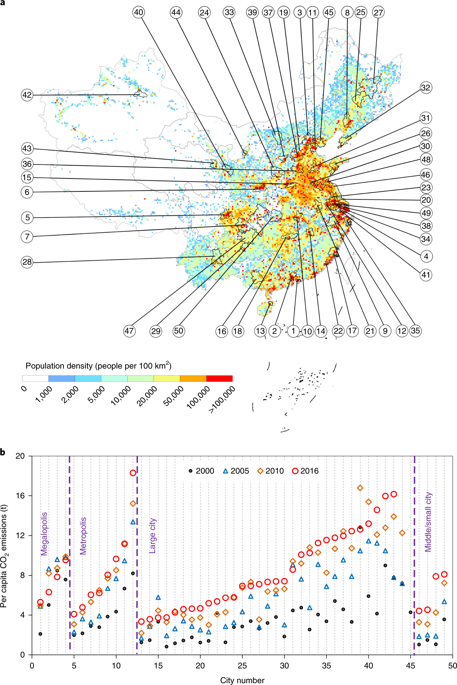Nature Sustainability ( IF 25.7 ) Pub Date : 2019-07-29 , DOI: 10.1038/s41893-019-0339-6 Haikun Wang , Xi Lu , Yu Deng , Yaoguang Sun , Chris P. Nielsen , Yifan Liu , Ge Zhu , Maoliang Bu , Jun Bi , Michael B. McElroy

|
China pledges to peak CO2 emissions by 2030 or sooner under the Paris Agreement to limit global warming to 2 °C or less by the end of the century. By examining CO2 emissions from 50 Chinese cities over the period 2000–2016, we found a close relationship between per capita emissions and per capita gross domestic product (GDP) for individual cities, following the environmental Kuznets curve, despite diverse trajectories for CO2 emissions across the cities. Results show that carbon emissions peak for most cities at a per capita GDP (in 2011 purchasing power parity) of around US$21,000 (80% confidence interval: US$19,000 to 22,000). Applying a Monte Carlo approach to simulate the peak of per capita emissions using a Kuznets function based on China’s historical emissions, we project that emissions for China should peak at 13–16 GtCO2 yr−1 between 2021 and 2025, approximately 5–10 yr ahead of the current Paris target of 2030. We show that the challenges faced by individual types of Chinese cities in realizing low-carbon development differ significantly depending on economic structure, urban form and geographical location.
















































 京公网安备 11010802027423号
京公网安备 11010802027423号